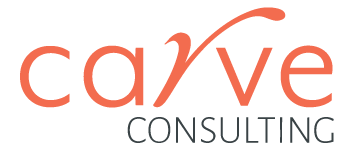Regardless of your age or your career phase, the process of securing a new job requires a sales and marketing approach. The employer is the customer and you are selling the product, which is you. Being able to overcome the obvious or unspoken objections, through tailoring and pitching your experience to their needs and values, will give you a much higher chance of securing your next role.
To get an employer’s attention you need to focus on what is valuable to them. While the best recruitment process is a human experience, you still need to get their attention through your resume, covering letter and LinkedIn profile. Pitching the value you can bring is particularly important in mid to late career, or if your career is not perfectly linear.
Pitch the skills and competencies that match the employer
I was talking with a long time contact recently, as they are considering what their next career step should be. They were feeling quite burnt-out from their current role and industry, so naturally looking for a change. When I asked her, “what next step have you thought about?” she said she was ‘open’ to different roles and varying industries outside of the sector she’d just spent the past 12 years.
As I listened, the question that came to my mind was, ‘will they be open to you?’
In a risk averse employment market, the majority of employers are looking for proof and certainty that the investment in a new hire will have a positive impact. The closer you can target your skills and experience to their industry, strategy, customer base and role requirements, the more likely it is that you will secure the new role. It doesn’t mean you have to limit your search to similar organisations within your sector, but also look at sectors that will recognise your transferable knowledge.
Pitching a mid or late career change
While there is more conversation around age discrimination and unconscious bias, unfortunately, in a challenging market, securing a job when you are considered an older worker (over 45) or non-linear career path, has been difficult. Hiring managers still approach the process with a preconceived idea or unconscious bias, and then add some extra risk aversion, and they can too easily default to outdated thought patterns.
By being conscious of these factors, but not being a slave to them, you can instead focus your pitch around your value and mindset. Value relates to the knowledge that can have a positive impact on their organisation. Mindset is reflected in your work style and character traits, such as adaptability, problem solving, communication, creativity and openness to learn. Look for how you align to their culture and strategy.
What to focus on for different career paths
Linear career path
With a linear career path – applying within your sector – to stand out from other candidates, focus on two things:
- Firstly, use keywords, terminology, and/or recognised stakeholders to give the reader confidence you know your industry.
- Secondly show how you can add value, through key achievements, insights relating to industry challenges or trends and always include measurable outcomes.
Simple tip, write the key achievements as you’d answer a behavioural based question (eg. situation, actions, outcomes).
Mixed career path
Use the career objective and a key achievements section on the front page of your resume to tell your story of conscious choices and how the combination of your experiences brings richer competencies and perspective. Mixed career paths will also raise concerns that you may change your mind again. Address this by including in your career objective and covering letter why you chose this career path and what you aspire to.
You are looking to connect to an organisation open to change and ideas. If an employer shows they have a conservative approach, and believes only someone from inside the industry can perform the roles, don’t spend time trying to to convince them, keep looking.
Career breaks
Life happens – sometimes by choice and sometimes not. Include the dates and reason for the break in employment. Whether it’s family leave, study leave, travel, or carer’s leave, refer to the decision or impact of this break in your story in the career objective and covering letter. The second step is to demonstrate your continued knowledge, courses or formal education, or side gig if it’s been an extended timeframe, to show your aspiration and commitment to your next role. If this career break is more than two years ago, there is no need to make reference it as you are now leveraging your current experience.
Finding the right match
Job search can be like dating, the more you know yourself and what you’re looking for, the sooner you’ll find the right match. While it can be disheartening to sometimes not get the call or notice some people are in higher demand than others, in reality you only need one to be the right fit.

